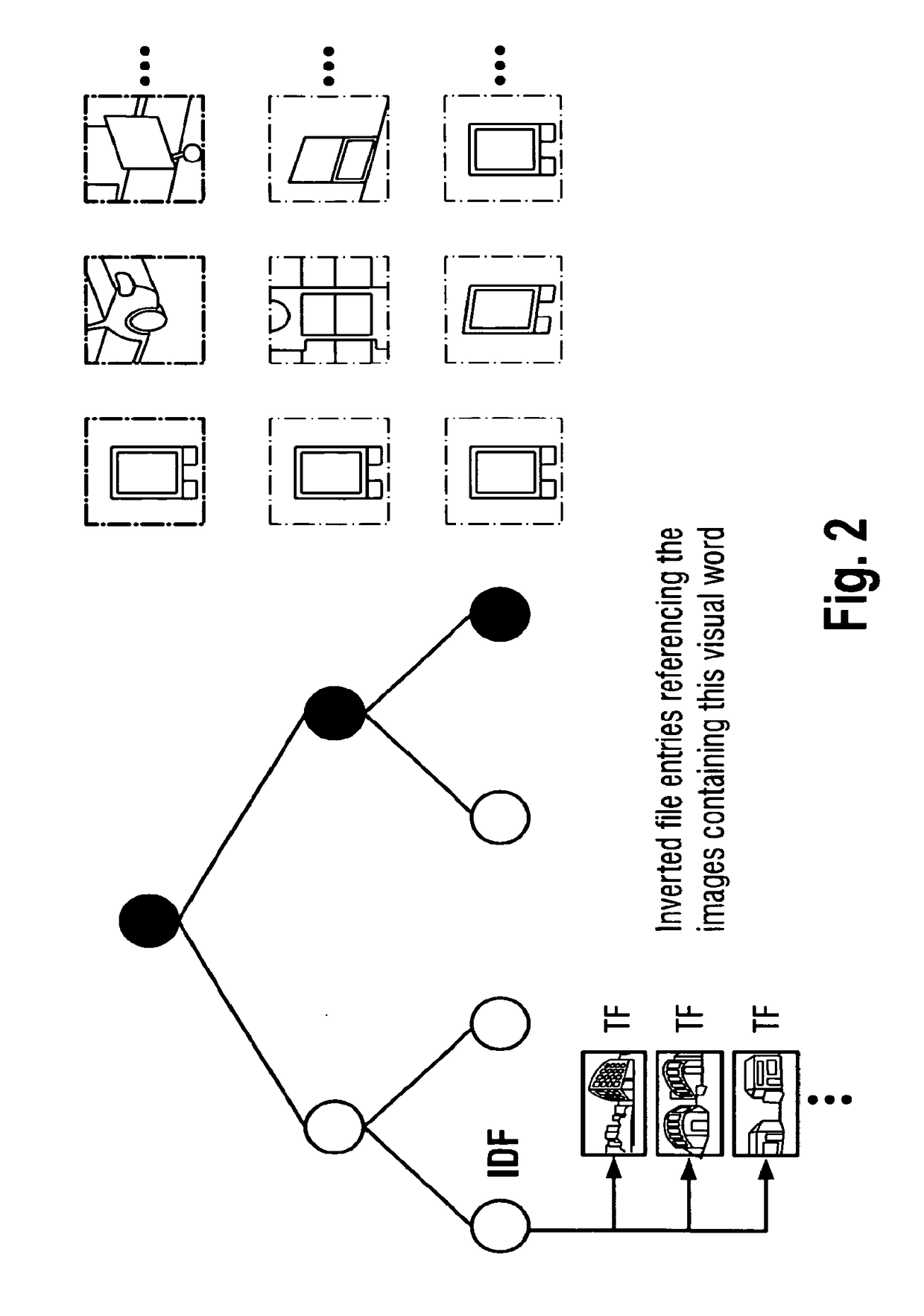Visual localization method
a visual and localization technology, applied in the field of visual localization methods, can solve the problems of limiting the applicability of the method to outdoor scenarios with few obstacles, more severe, and virtually inaccessible gps
- Summary
- Abstract
- Description
- Claims
- Application Information
AI Technical Summary
Benefits of technology
Problems solved by technology
Method used
Image
Examples
Embodiment Construction
Bag-of-Features Approach
[0021]FIG. 1 illustrates a basic architecture of a visual location recognition system which is in principle similar to that of a mobile visual product search system, with the difference that not a single image but a continuous sequence of images is used to query a reference database. As a first step, robust local features are extracted from the individual video frames to distinctively describe their content. Once the features are extracted, they are sent to the server where content based image retrieval algorithms (CBIR) are employed to identify the visually most similar reference image in the database.
[0022]One approach to this is the Bag-of-Feature (BoF) approach as illustrated in FIG. 2. The BoF approach reformulates the image retrieval problem into a text retrieval problem by quantizing the high-dimensional feature descriptors into so called visual words with the aid of the k-means algorithm. At fine quantization, descriptors associated to a word follow a...
PUM
 Login to View More
Login to View More Abstract
Description
Claims
Application Information
 Login to View More
Login to View More - R&D
- Intellectual Property
- Life Sciences
- Materials
- Tech Scout
- Unparalleled Data Quality
- Higher Quality Content
- 60% Fewer Hallucinations
Browse by: Latest US Patents, China's latest patents, Technical Efficacy Thesaurus, Application Domain, Technology Topic, Popular Technical Reports.
© 2025 PatSnap. All rights reserved.Legal|Privacy policy|Modern Slavery Act Transparency Statement|Sitemap|About US| Contact US: help@patsnap.com



